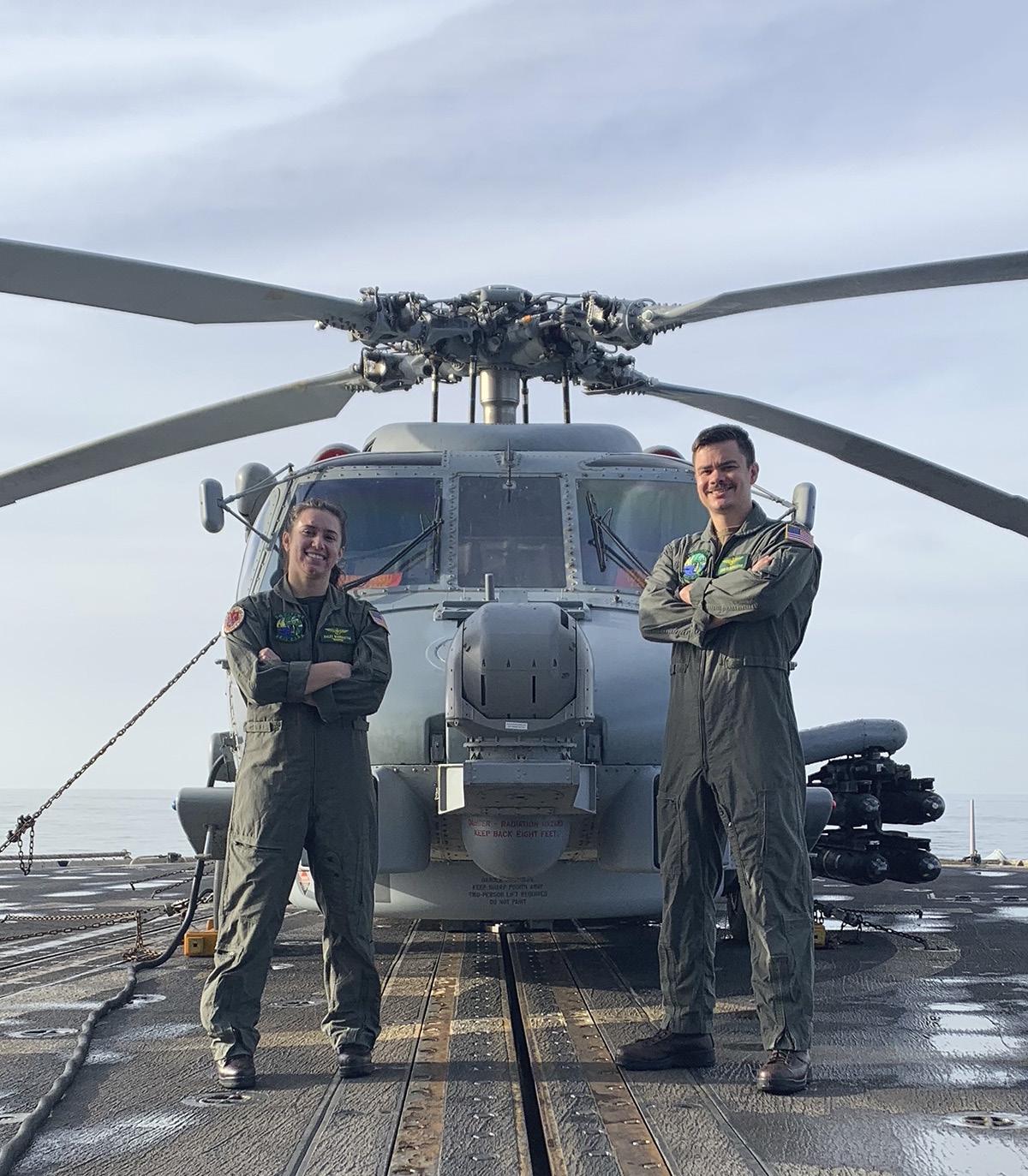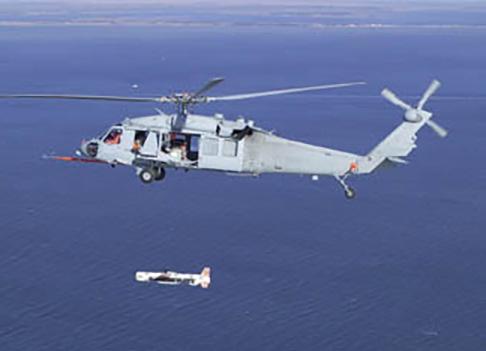Features Rat-Catching 101: The 50th Anniversary of HM-12 and the Birth of Airborne Mine Countermeasures By CDR Michael Lanzillo, USN
N
aval mines have existed for centuries. You read that correctly…centuries. From 16th century China’s naval explosives used to combat Japanese pirates of the time, to the British Navy’s usage in the 17th century, to the United States’ first naval mine--Bushnell’s Keg, used in the War for American Independence-- to mines of all shapes, sizes, and variations currently utilized today by nations around the globe. Mines are out there – and they are relatively cheap, easily proliferated, even easier to deploy, and are incredibly effective at achieving their purpose. This is not a secret, nor is it a novel statement. But while countering these weapons was, is, and always will be fraught with controversy and contention amongst naval leadership, what cannot be argued is the proud history of the Airborne Mine Countermeasures (AMCM) community, and especially HM-12, on its 50th Anniversary.
A Sikorsky RH-3A Sea King minesweeping helicopter (BuNo 147140) of the U.S Navy Naval Air Mine Defense Development Unit (NAMDDU) at Panama City, Florida (USA) in 1967
Naval officers of the past have opined that the work of countering naval mines was “unpleasant work for a naval man, an occupation like that of rat-catching.” 1 That is one opinion to be sure, but the AMCM community and fiftyyear-old HM-12 specifically, has forged a combat legacy of “rat-catching” across the globe since its inception. The idea of AMCM was conceived in the Korean War, with HC-6 Detachment 84, flying the venerable RH-3A helicopter. The world’s first aerial minesweeping unit was founded to sweep the Korean Wonsan Harbor of magnetic influence mines after a Korean minesweeper struck a mine and was summarily destroyed in 1967. These pioneers of AMCM flew a helicopter operating outside of its design limits, as the mission of minesweeping caused a tail rotor buzz and maxed out transmission oil temperatures, where pilots would routinely “take the temp up to the red line, back it off until it drops, and then take it up again.” Deployed off USS Ozark (MCS 2), a recommissioned Minesweeper that was formerly a World War Two troop landing ship, and towing the MK105 Magnetic Influence sled, the pilots and aircrew of HC-6 added a new tactic to the U.S. MCM strategy with AMCM, employing brand-new MCM gear in a machine never designed for the task. The AMCM mission was a direct result of the Navy’s “humiliation” during the anti-climactic amphibious landing at Wonsan during the Korean War. The official report of the landing read: “The Navy able to sink an enemy fleet, to defeat aircraft and submarines, to do precision bombing rocket attack, and gunnery, to support troops ashore and blockade, met a 3,000 Rotor Review #153 Summer '21
mine field laid off Wonsan by the Soviet naval experts…. The strongest Navy in the world had to remain in the Sea of Japan while a few minesweepers struggled to clear Wonsan… adequate mine countermeasure forces with trained personnel and equipment should be provided in each fleet and should be ready for service.” While HC-6 was primarily tasked with clean-up of the mines left in Wonsan following the Korean War, it served as a proof of concept for AMCM, which Admiral Elmo Zumwalt, who in 1970 assumed the role of CNO, pushed as a Navy priority for the first time. Only one year later, in 1971, ADM Zumwalt accepted the transfer of thirteen CH-53 helicopters from the Marine Corps and established the first operational AMCM squadron, HM-12, based in Norfolk, Virginia. HM-12 would not idle as a newly commissioned squadron for long, as it was secretly deployed to the Philippines in 1972 for training, and subsequently to the waters off North Vietnam in 1973 as part of Operation End Sweep. As part of the Nixon administration’s efforts to negotiate a settlement to the Vietnam War, and the release of all American prisoners of war, the U.S. began mining North Vietnam’s most vital ports, beginning with Haiphong. “The first drop in Haiphong harbor consisted of 36 magnetic-acoustic mines, which immediately stopped virtually all traffic.” After the 1973 cease-fire occurred in Paris, and American POWs were set to be released in exchange for clearance of the mined ports, HM-12, as part of Task Force 78, began to sweep Haiphong harbor using MK-105 magnetic influence hydrofoil sleds and Magnetic Orange Pipes, a buoyant, styrofoam-filled magnetic
62









































